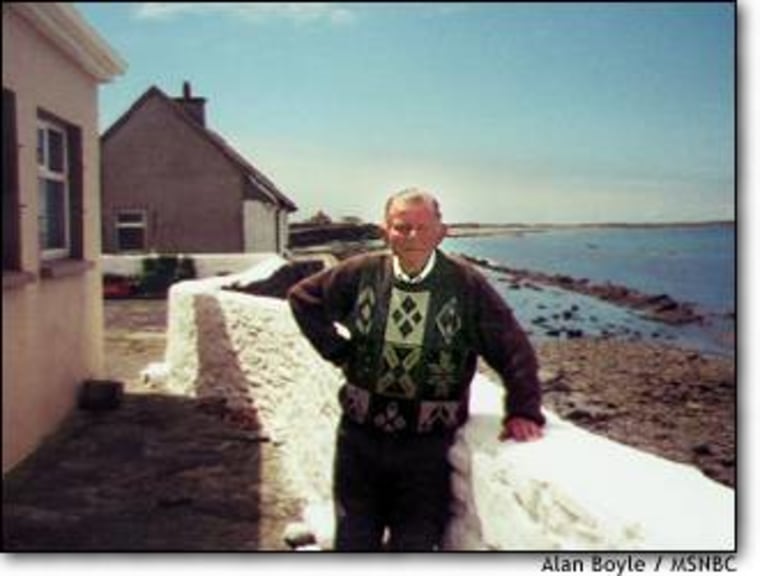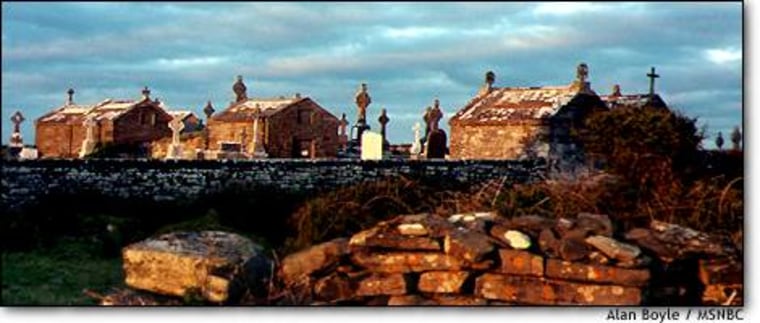It’s not often you get to choose your ancestors — or have them chosen for you. But that’s what it came down to when I finally went back to the land my great-grandfather trod.
This trip was the climax to a year and a half of genealogical research — involving Web searches, phone calls, e-mail and snail-mail letters and innumerable trips to courthouses, libraries and record repositories. The quest combined the allure of a detective story, an archaeological dig and public accounting.
Eventually, my e-mail exchanges put me in contact with an innkeeper at ground zero in my quest: the western fringe of County Clare. I already knew that my great-grandmother came from the area, thanks to a combination of family reminiscences, written records and a review of Irish records. My great-grandfather, Michael Boyle, also came from Clare — and it turned out that Quilty, on Ireland’s Atlantic shore, was the county’s most prolific spot for Boyles in the mid-1800s.
After weeks of scheming, I finally put all the pieces in place: a personal detour during a business trip ... a rental car, to be picked up at Shannon’s airport ... and a reservation at the Clonmore Lodge, the outsized farmhouse operated by my Quilty contact, Maire Daly.
Perhaps most importantly, Maire and her husband, John, smoothed the way for me with the Boyles of Quilty. There was little ground for determining exactly which part of the family I might be related to, if any. But for John Joe Boyle, there was enough to justify making a leap of faith.
“Your dream has come true,” he wrote in a letter received just a couple of weeks before my trip. John Joe picked up on my grandfather’s name, Austin, and traced an Irish line of Boyles that had Austins in every generation. In John Joe’s view, the connection was confirmed by the fact that my great-grandfather may have had a distant connection to a Mary Corry — another name found in the Irish line.
In this way, with the Dalys’ assistance, my Boyle ancestors were, in effect, adopted into a particular strain of Quilty Boyles. From the very afternoon of my arrival, I chatted with John Joe and other members of the family tree to which I had been grafted. It didn’t matter that the precise connection eluded us: We traded photographs and anecdotes about our respective forebears in a cousinly way.
“If you want to come back and build here, I’ve got a beautiful site for you,” John Joe said with a chuckle. “I’m advertising now — it’s all part of the game.”

Maire Daly served not only as my host, but also my guide: She accompanied me to break the ice with some elderly might-be relatives — and steered me away from others who saw little cause to assume a family connection, or who might take the opportunity to spin some blarney for a visiting Yank.
Just a few miles from Quilty lies the townland of Carrowduff where my great-grandmother, Ellen Howe, grew up. Records indicate that a John Howe was granted a lease in Carrowduff in 1712. By the mid-1800s, several Howe families were living there. But today, only one Howe family remains.
“There was a landlord out here,” the patriarch, Michael Howe, told me. “He had houses for all his workers, they were working for him. I suppose what happened back then is, they got mad at him, and the children emigrated.”
Some of them went to America, like my great-grandmother, while others sailed to Australia. I’ve compared notes with the Australian descendants via e-mail, but once again, the precise connection has eluded us. The memories of those relationships — which predate the existing church and civil records — have faded away long ago.
An inconclusive end?
So in my case, the genealogical detective story is heading toward an inconclusive end: I haven’t come up with the clear-cut diagram that leads back to physicist Robert Boyle and Richard Boyle, First Earl of Cork (as alleged by some of the family stories).
But neither have I found any evidence so far to rule out a link to the Boyles of Quilty. And there’s no doubt that at some point in my summer travels around County Clare — from the otherworldly Burren in the north, to musical Doolin on the central coast, to charming Kilrush in the south — I’ve glimpsed the same vistas my great-grandfather surveyed more than 150 years earlier, before the Great Famine.
I’ve been to the Old Country, and I’m content to consider myself related to people there who are content to consider themselves related to me.
I could do worse.
to read the third installment of the family story, based on genetic research. Check Family Boyle Net for more on the Boyle genealogical quest.
